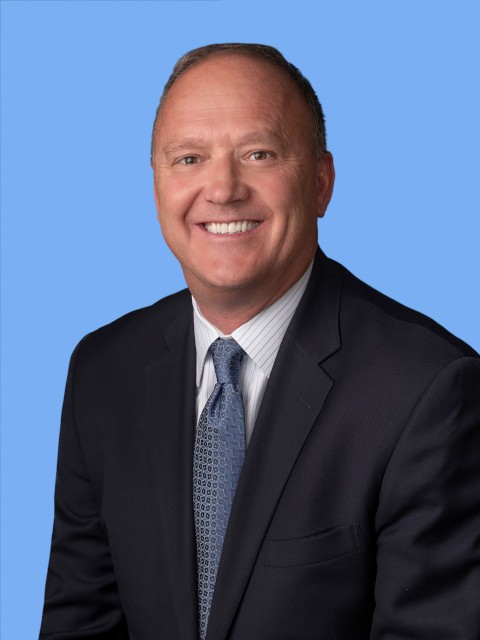Stay ahead of the latest regulatory shifts and healthcare breaking news with Headlines from the Hill.
In this month’s edition you will find:
- RCD Update: More conflicting guidance on short stays and early transfers.
- IPPS Rule: CMS releases proposed FFY 2026 Medicare Acute Hospital IPPS rule.
- Medicaid Payment Program Cuts: Speaker says cuts to Affordable Care Act off the table.
- Remote Patient Monitoring: Rural Patient Monitoring Access Act introduced.
- Behavioral Health: Medicaid cuts would destabilize mental healthcare.
RCD Update: More conflicting guidance on short stays and early transfers.
Novitas, the IRF Review Choice Demonstration (RCD) contractor, has again changed its policy regarding the treatment of short lengths of stay (LOS) under the demonstration. This new guidance, released in April, supersedes inconsistent instructions provided in Fall 2024 and details the updated treatment of these stays.
Are short stays and short stay transfers included in IRF RCD?
IRF stays and transfers of three days or less are excluded from the RCD and do not require a Unique Tracking Number (UTN). Therefore, Novitas will issue an additional documentation request (ADR) for all claims billed for three days or less, requiring the IRF to submit documentation supporting the admission as a short stay, short stay transfer or standard IRF stay.
In the event of an ADR, providers should take the following actions:
- If the admission is for a short stay or short stay transfer (transfers of three days or less), the provider shall submit medical records to support the short stay.
- If medical documentation confirms a short stay or short stay transfer, Novitas will process the claim as normal and the IRF’s affirmation rate will not be impacted.
- If the admission is not for a short stay or short stay transfer, the provider shall submit medical records to support that the claim met IRF requirements.
- Novitas will process the claim as normal and the IRF’s affirmation rate will be impacted.
This new policy reverses prior guidance from both Novitas and CMS, where both entities stated that true “short stays” (where the patient has an IRF LOS of fewer than three days and was discharged home or home with home health) were excluded from the demonstration, while “short stay transfers” (where the LOS was three days or fewer but the discharge was to another IRF, an acute care hospital, long-term care hospital or skilled nursing facility) were included in the program and needed a Unique Tracking Number to be paid.
Lifepoint will continue to share updates as the RCD evolves.
IPPS Rule: CMS releases proposed FFY 2026 Medicare Acute Hospital IPPS rule.
CMS released the proposed rule for FFY 2026 Medicare Acute Hospital Inpatient Prospective Payment System (IPPS) and Long-Term Care Hospitals (LTCH). The rule proposes a net 2.4% increase for inpatient PPS payments in FY 2026. This update reflects a hospital market basket increase of 3.2% and a productivity cut of 0.8%. It would increase hospital payments by $4 billion, including a proposed $1.5 million increase in disproportionate share hospital payments and a proposed $234 million increase in new technology add-on payments. Overall, it would increase hospital payments by $4 billion in FY 2026 compared to FY 2025. CMS’ proposed policies would:
- Increase inpatient PPS payment rates by a net 2.4% in FY 2026.
- Make minor changes to the mandatory TEAM, including adding a new quality measure and deferring participation for new hospitals.
- Seek input on a low-volume threshold policy for TEAM.
- Discontinue the low-wage index hospital policy for FY 2026.
- Add seven new MS-DRGs and delete six MS-DRGs.
- Remove four measures from the inpatient quality reporting program focused on health equity and COVID-19 vaccination for healthcare personnel.
- Include Medicare Advantage patients in the calculation of multiple claims-based measures across several programs.
- Shorten the Hospital Readmission Reduction Program’s performance period from three to two years.
Medicaid Payment Program Cuts: Speaker says cuts to Affordable Care Act off the table.
House Speaker Mike Johnson said that major cuts to the Affordable Care Act’s (ACA’s) Medicaid expansion were off the table. This leaves a significant remaining cut: limiting state use of provider taxes to boost federal Medicaid spending. This measure, projected to save $668 billion, would disproportionately impact poorer, Southern states that historically supported President Trump. Specifically, South Carolina, Mississippi, Alabama and Tennessee face the greatest risk. If legislators ended provider taxes, those states could lose 30% of their federal Medicaid funding, according to an analysis from the Urban Institute. This loss would create large state budget deficits, necessitating difficult choices regarding taxes and benefits.
Remote Patient Monitoring: Rural Patient Monitoring Access Act introduced.
U.S. Senators Marsha Blackburn (R-TN) and Mark Warner (D-VA) introduced the Rural Patient Monitoring (RPM) Access Act to ensure Medicare patients in rural and underserved communities have access to remote physiologic monitoring services, which lower costs and improve access to care by using technology to collect and transmit patient health data to healthcare providers.
Representatives David Kustoff (R-TN), Mark Pocan (D-WI), Troy Balderson (R-OH) and Don Davis (D-NC) introduced companion legislation in the House. This legislation is a direct result of Lifepoint Health’s partnership with Cadence to elevate this issue.
Behavioral Health: Medicaid cuts would destabilize mental healthcare.
As federal lawmakers debate steep reductions to Medicaid, health leaders are raising urgent concerns about the consequences for the state’s behavioral health system. The proposed funding changes — ranging from block grants to reductions in federal cost-sharing — have sparked urgent concern across hospitals, mental health providers, and policy advocates.
The GOP House proposals would prevent using the provider tax and direct payment programs as a mechanism to supplement and stabilize funding for behavioral health in the future. Proposed funding cuts also have the power to dismantle critical services, especially for residents facing poverty, mental illness, or substance use disorders — groups already struggling to access timely and affordable care. Organizations across the country are mobilizing to prevent cuts before they happen.


